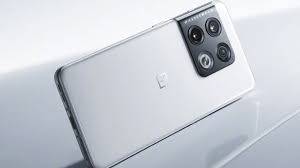Lenovo showcased a wide array of new products at this year’s IFA show in Berlin. Amid the impressive lineup, the standout for me was the Legion Go, which completely stole the show. However, the Lenovo Legion Glasses would have easily been my top pick if not for that. These remarkable AR glasses can be connected to any device with a USB-C port and project content directly onto the center of your field of vision.
The glasses effectively emulate a 27-inch monitor for each eye, boasting 60Hz miniLED panels. While Lenovo primarily markets them as companions for the Legion Go and the Legion 9i, they are compatible with virtually any video-outputting device. Additionally, they come equipped with speakers, brightness controls, and are highly portable.
The Lenovo Legion Glasses took me by surprise. I’ve never been particularly enthusiastic about augmented reality due to its complexity in execution. Anyone can create a small display near your eyes and claim it’s like a 27-inch monitor, but making it comfortable, practical, and powerful is another challenge entirely. Lenovo has managed to accomplish this remarkably well, even in my relatively brief test of the product, which lasted only about 15 minutes. Nevertheless, it was an enjoyable experience.
To put these glasses to the test, I used them with my Samsung Galaxy Z Fold 5 and Samsung DeX, which already presents a desktop-like use case for the glasses rather than a typical smartphone scenario. I could seamlessly watch YouTube videos, browse the web, and engage in various activities. Given the sometimes risqué content of shows like “The Boys,” I can easily envision these glasses being perfect for private viewing during public commutes.
It’s worth noting that these glasses do not obstruct your peripheral vision, but you cannot see through them, which means you wouldn’t want to wander around while wearing them to avoid potential collisions. You’ll still have some awareness of your surroundings through the sides of the glasses.
While Lenovo has explored similar glasses in the past, this time, they are capitalizing on existing APIs and software to extend the display from a host device to the glasses. They are compatible with a wide range of devices, including iPhones with the use of an adapter.
In conclusion, I was thoroughly impressed by these glasses, and I can certainly see their utility for those seeking a larger display and more versatile entertainment options on the go. They may not be suitable for everyone, and most individuals may not require such a device, but if you find yourself desiring a bigger smartphone display while out and about, it’s worth considering these glasses or giving them a try if the opportunity arises.
Disclaimer: The views, suggestions, and opinions expressed here are the sole responsibility of the experts. No Digest Pulse journalist was involved in the writing and production of this article.



